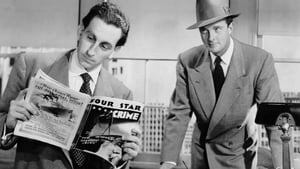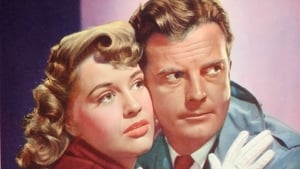Contact: [email protected]
Video Sources 0 Views
- Watch trailer
- Follow Me Quietly


Synopsis
Table of Contents
ToggleReview: Follow Me Quietly (1949) – A Taut and Suspenseful Crime Thriller

Introduction
Follow Me Quietly, released in 1949, is a gripping crime thriller directed by Richard Fleischer. Renowned for its tense atmosphere, clever plot twists, and suspenseful pacing, this classic noir film continues to captivate audiences with its riveting storyline. In this review, we’ll delve into the dark and shadowy world of Follow Me Quietly and its enduring impact on the genre.
Check The Full Colorized Movies List
Check Our Colorized Movies Trailer Channel
Understanding Follow Me Quietly (1949): Director, Cast, and Genre
Directed by Richard Fleischer, Follow Me Quietly features a talented ensemble cast, including William Lundigan, Dorothy Patrick, and Jeff Corey. The film belongs to the film noir genre, known for its dark themes, morally ambiguous characters, and atmospheric cinematography.
Exploring the World of Follow Me Quietly (1949): Plot and Characters
Follow Me Quietly follows the intense manhunt for a mysterious serial killer known only as “The Judge,” who leaves cryptic messages at the scenes of his crimes. As Detective Harry Grant and his team race against time to apprehend the elusive murderer, they must navigate a web of deception and intrigue to uncover the truth behind The Judge’s identity and motives.
The Art of Film Colorization
While Follow Me Quietly was originally filmed in black and white, its early colorized version adds a new layer of depth to its atmospheric visuals. The colorization process enhances the film’s moody atmosphere and captures the nuances of its shadowy characters with striking clarity.
Early Colored Films: A Brief History
The history of early colored films is marked by innovation and experimentation as filmmakers sought to enhance the visual appeal of their movies. From hand-tinted frames to pioneering technicolor processes, the evolution of colorization techniques transformed the cinematic landscape, offering audiences a new way to experience the darkness and intensity of film noir.
Follow Me Quietly (1949) and Its Early Colored Version
The decision to release Follow Me Quietly in a colorized format was made with the intention of immersing audiences in the atmospheric world of the film and enhancing its visual impact. While some purists may prefer the original black and white version, the early colorized edition of Follow Me Quietly adds a new layer of depth to its moody atmosphere and captures the tension and suspense of its storyline with breathtaking clarity.
The Debate Over Film Colorization
The debate over film colorization continues to divide audiences and industry professionals alike. While some argue that colorization breathes new life into classic films and makes them more accessible to modern audiences, others maintain that it compromises the artistic integrity of the original work. As technology advances and filmmaking techniques evolve, the debate over colorization remains a topic of ongoing discussion within the film community.
Examining Follow Me Quietly (1949) as an Early Colored Film
Viewing Follow Me Quietly in its early colorized iteration offers audiences a fresh perspective on its atmospheric visuals and suspenseful storyline. The colorization process enhances the film’s moody atmosphere and captures the tension and intrigue of its manhunt narrative with stunning clarity. As viewers are drawn into the dark and shadowy world of Detective Harry Grant and The Judge, they are treated to a visual feast that immerses them in the suspenseful atmosphere of classic film noir.
Influence and Legacy: Follow Me Quietly (1949)’s Impact on Cinema
Follow Me Quietly is widely regarded as a gripping crime thriller that continues to influence filmmakers and inspire new generations of cinephiles. Its tense atmosphere, clever plot twists, and suspenseful pacing have left an indelible mark on the genre, shaping the way crime thrillers are made and appreciated to this day.
Director’s Cinematic Legacy: Beyond Follow Me Quietly (1949)
Richard Fleischer’s directorial legacy extends far beyond Follow Me Quietly, encompassing a diverse body of work that includes acclaimed films such as 20,000 Leagues Under the Sea and Soylent Green. As one of the most versatile filmmakers of his generation, Fleischer was known for his ability to craft compelling narratives that kept audiences on the edge of their seats. Follow Me Quietly stands as a testament to his talent and creativity, solidifying his reputation as one of the great auteurs of classic Hollywood cinema.
Themes Explored in Follow Me Quietly (1949)
At its core, Follow Me Quietly explores themes of obsession, deception, and the relentless pursuit of justice in the dark underbelly of urban society. Through its tense atmosphere and morally ambiguous characters, the film offers a nuanced portrayal of the human condition, challenging viewers to confront their own beliefs about right and wrong as they navigate the treacherous world of crime and punishment.
Reception and Controversy Surrounding Follow Me Quietly (1949)
Upon its release, Follow Me Quietly received widespread critical acclaim for its tense atmosphere, clever plot twists, and suspenseful pacing. While the decision to release the film in a colorized format sparked debate among purists, its enduring popularity has cemented its status as a timeless classic of the film noir genre.
Where to Watch Follow Me Quietly (1949) Online
For those eager to experience Follow Me Quietly for themselves, the film is readily available on popular streaming platforms such as Amazon Prime Video, Google Play Movies, and iTunes. Whether viewed in its original black and white format or its early colorized iteration, Follow Me Quietly offers a cinematic experience that is both gripping and visually stunning.
FAQs About Follow Me Quietly (1949)
1. Is Follow Me Quietly based on a true story?
No, Follow Me Quietly is a fictional crime thriller that explores the dark and shadowy world of the criminal underworld through the eyes of its morally ambiguous characters. While the film’s storyline may draw inspiration from real-life events, its characters and plot are works of fiction.
2. Who starred in Follow Me Quietly?
Follow Me Quietly stars William Lundigan as Detective Harry Grant, the protagonist tasked with apprehending the elusive serial killer known as The Judge. He is supported by Dorothy Patrick and Jeff Corey in pivotal roles.
3. What is the central message of Follow Me Quietly?
At its core, Follow Me Quietly explores the themes of obsession, deception, and the relentless pursuit of justice in the dark underbelly of urban society. Through its tense atmosphere and morally ambiguous characters, the film offers a nuanced portrayal of the human condition, challenging viewers to confront their own beliefs about right and wrong as they navigate the treacherous world of crime and punishment.
4. Why was Follow Me Quietly released in a colorized format?
The decision to release Follow Me Quietly in a colorized format was made with the intention of immersing audiences in the atmospheric world of the film and enhancing its visual impact. While some purists may prefer the original black and white version, the early colorized edition of Follow Me Quietly adds a new layer of depth to its moody atmosphere and captures the tension and suspense of its storyline with breathtaking clarity.
5. What is the legacy of Follow Me Quietly?
Follow Me Quietly is widely regarded as a gripping crime thriller that continues to influence filmmakers and inspire new generations of cinephiles. Its tense atmosphere, clever plot twists, and suspenseful pacing have left an indelible mark on the genre, shaping the way crime thrillers are made and appreciated to this day.
6. Are there any sequels or remakes of Follow Me Quietly?
No, there have been no official sequels or remakes of Follow Me Quietly. However, the film’s enduring popularity has inspired countless reinterpretations and homages in various media. Nonetheless, none have captured the gripping tension and suspense of the original 1949 classic.
7. Where can I watch Follow Me Quietly online?
For those eager to experience Follow Me Quietly for themselves, the film is readily available on popular streaming platforms such as Amazon Prime Video, Google Play Movies, and iTunes. Whether viewed in its original black and white format or its early colorized iteration, Follow Me Quietly offers a cinematic experience that is both gripping and visually stunning.
Conclusion
In conclusion, Follow Me Quietly (1949) stands as a gripping crime thriller that continues to captivate audiences with its tense atmosphere, clever plot twists, and suspenseful pacing. Whether viewed in its original black and white format or its early colorized iteration, Richard Fleischer’s insightful direction and the stellar performances of the cast offer a cinematic experience that is both gripping and visually stunning. As viewers are drawn into the dark and shadowy world of Detective Harry Grant and The Judge, they are treated to a visceral journey that challenges their beliefs about right and wrong and leaves a lasting impact on their understanding of the human condition. Follow Me Quietly remains a timeless classic that continues to enthrall and inspire audiences around the world.














